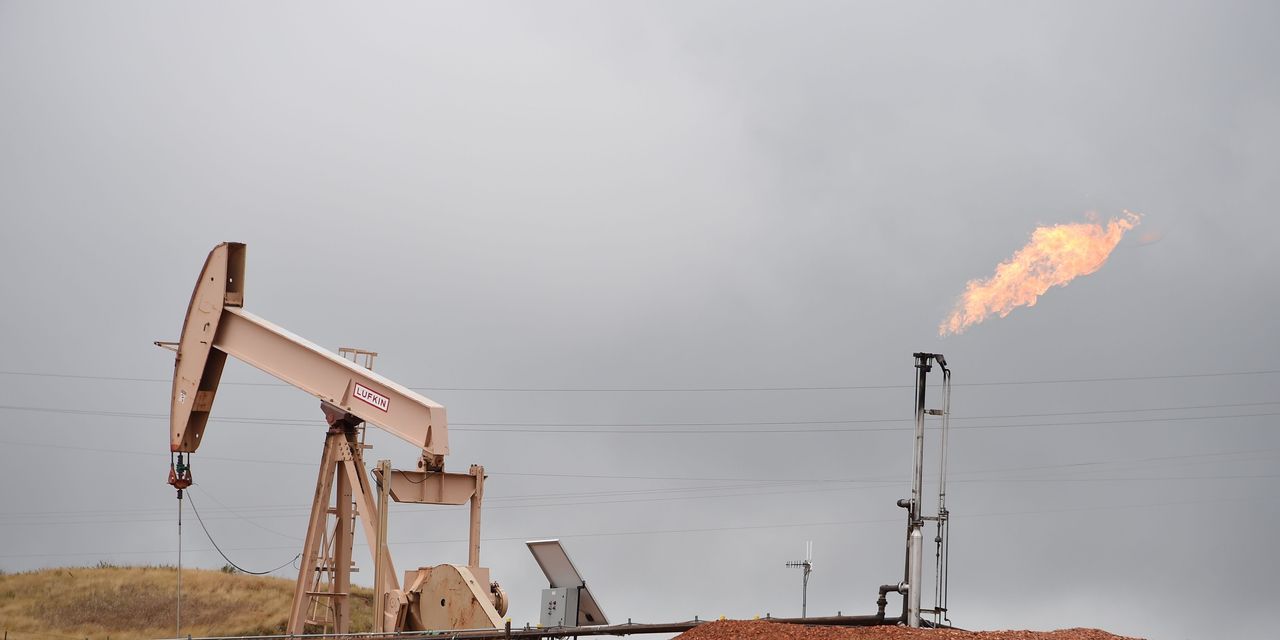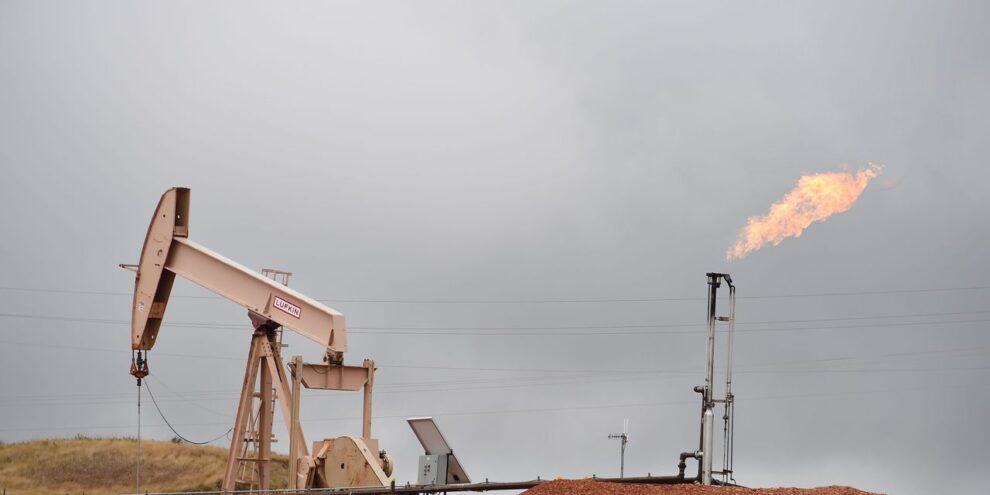
Oil futures traded mostly higher on Monday, on track to cap a sharp January rally that has lifted the U.S. benchmark by around 15% as traders continue to follow the threat of a Russian invasion of Ukraine.
“While the crude oil market is short-term overbought, and the Russia situation seems to have moderated somewhat, the threat against supply remains and is combined with residual demand optimism to leave the bull camp with the edge,” analysts at Zaner wrote in Monday’s note.
West Texas Intermediate crude for March delivery CL00, +0.75% CL.1, +0.75% CLH22, +0.75% added 3 cents, or less than 0.1%, to $86.85 a barrel on the New York Mercantile Exchange. The U.S. benchmark is on track for a 16% monthly rise.
Global benchmark March Brent crude BRNH22, +1.29% was up 87 cents, or 1%, at $90.90 a barrel on ICE Futures Europe, headed for a monthly rise of nearly 17% ahead of the contract’s expiration at the end of the session. April Brent BRN00, +0.72% BRNJ22, +0.72%, the most-actively traded contract, was up 6 cents, or nearly 0.1%, at $88.58 a barrel.
Brent and WTI last week both traded at levels last seen in October 2014.
Russia has amassed around 100,000 troops near Ukraine border and taken other actions that have sparked fears an invasion of the neighboring country may be imminent. The U.S. and its allies have threatened searing sanctions against Moscow in the event of an attack. Russia has insisted that NATO rule out membership for Ukraine and has made other security demands that the U.S. and its allies have deemed nonstarters.
A United Nations Security Council meeting on Monday will offer “one more opportunity to find a diplomatic way out for the Russians,” said Linda Thomas-Greenfield, U.S. ambassador to the U.N., in a Sunday television interview.
The Organization of the Petroleum Exporting Countries and its Russian-led allies, a group known as OPEC+, will meet this week. OPEC+ has so far stuck to a timetable that has seen it add 400,000 barrels a day to output in monthly increments, though members have struggled to meet the increased quotas.
“The only short-term solution for balancing the supply-short oil market will therefore need to come from OPEC+, and steered by Saudi Arabia, the producer with the largest spare capacity,” said Louise Dickson, senior oil markets analyst at Rystad Energy, in a note.
“The group’s top producer could decide to add more ‘voluntary’ barrels outside the framework of the agreement to ease oil prices, a similar, but mirrored action from January 2021 when it surprised the market with an additional 1 million [barrel a day] cut,” Dickson said. “In short, Saudi Arabia can quickly and easily drum up spare capacity if it decides it is beneficial.”
Read: Why OPEC+ may not want $100 oil prices
On Nymex, petroleum products traded lower, ahead of the expiration of the February contracts at the end of the trading session. February gasoline RBG22, +0.36% lost 0.1% to $2.539 a gallon and February heating oil HOG22, -0.56% declined by 1.2% to $2.751 a gallon.
March natural gas NGH22, +2.63% traded at $4.709 per million British thermal units, up 1.5%.
Prices were up “on cold weather outlooks, which threaten to boost heating demand later this week and potentially impact Texas gas production,” said Christin Redmond, commodity analyst at Schneider Electric, in a note. “Also, over the weekend, a blizzard pummeled the Northeast, with daily snowfall in Boston tying an all-time record.”






